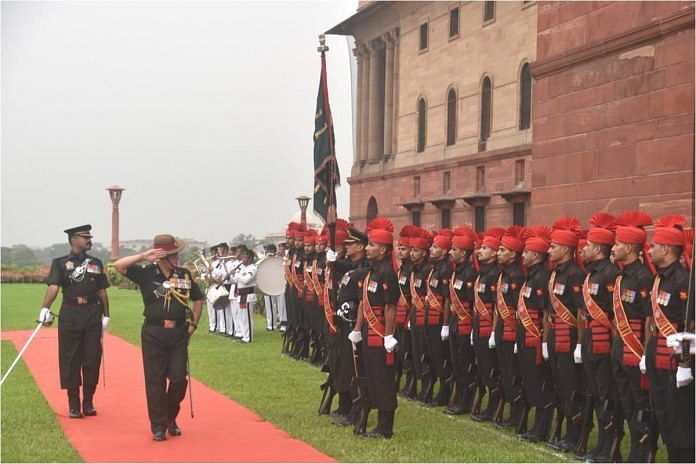The People’s Liberation Army will be smarting at how they were forced to backtrack from their strident public posture after Doklam and may now step up their provocative actions along the Line of Actual Control.
General Bipin Rawat’s remarks on the need to prepare for a two-front war, made during a seminar last week, have kicked up the usual media storm. The Chinese government also questioned if General Rawat was authorised to speak on such matters and whether his remarks truly represent India’s position.
The issue of a two-front war involving both China and Pakistan evokes fierce debate among strategic experts. The questions which are invariably raised include — can it actually happen? How prepared are we for it? Is it merely empty rhetoric given our current military shortages? Does it not represent a failure of India diplomacy?
To arrive at some answers, we must understand the reality of the strategic environment along our borders. There is a visible and growing assertiveness of the Chinese Army in areas considered ‘disputed’. This is now matched equally by the determination of the Indian Army to not permit any change in the status quo.
It is thus inevitable that there will be an increase in tensions along the Line of Actual Control (LAC). We have seen serious incidents at Depsang in 2013, Chumar in 2014 and most recently at Doklam. Though all these situations have been defused without firing a shot, the scale of military activity has steadily increased. While Depsang involved only a few soldiers on both sides, Chumar saw hundreds of soldiers facing off in Ladakh. During the Doklam standoff, there were reports of mobilisation of reserve units and forward deployment of artillery of both countries.
The PLA would be smarting at how they were forced to backtrack from their strident public posture during Doklam and may now step up their provocative actions along the LAC. General Rawat’s recent statement that “such instances are likely to increase in the future”, must be seen in this context.
On the Pakistan border, the ongoing proxy war shows no signs of abating. The ceasefire of 2003 is in tatters, and heavy exchanges of fire across the Line of Control has become routine. Infiltration from Pakistan, and cross-border attacks on police and military installations have shown a substantial increase in the past four years. Diplomacy with Pakistan seems to have run its course.
In the last few years, Pakistan-China ties have strengthened significantly and a key component of this partnership is their strategy to keep India in check. While blocking India’s entry into the Nuclear Suppliers Group, China sought to link it with Pakistan also gaining membership to this body. The massive Chinese investment in China Pakistan Economic Corridor (CPEC) further links Pakistan’s future with China. The CPEC is a strategic necessity for China and it would react strongly to any security threats to it, whether internal or external.
Could all this translate into direct collusion between the two countries during a future war with India? It would be foolish to rule out the possibility of the two countries taking advantage of any strategic difficulty that India finds itself in.
In the first week of September 2014, the Indian government and the army were engaged in a massive rescue effort during the floods in Jammu and Kashmir. The Srinagar-Leh highway was completely cut off. It was at this time that hundreds of PLA soldiers attempted an intrusion across the border in Chumar. Even as the Indian and Chinese armies were locked in a standoff at Ladakh, infiltration attempts from Pakistan continued unabated.
The Army Chief is responsible for the land borders of the country. He must ask his officers and men to be prepared for all contingencies. And that is exactly what he did in a seminar where the majority audience were from the military. A two-front war is a very grim scenario for India and not one that the Indian military would preferably like to face, but it would an abdication of responsibility to not even consider its possibility. I do not think there is any official in the Ministry of External Affairs who can give an assurance that diplomacy would limit us to one adversary at a time.
In my view, the discussion on the two-front scenario needs much greater debate. We need to practically assess the nature and contours of how this scenario could play out.
The nature of warfare is changing, and information operations, cyber warfare and psychological operations could be as important as hard power. It is only after extensive discussions that realistic solutions will emerge on the politico-military approach, diplomatic efforts and the required military capability.



